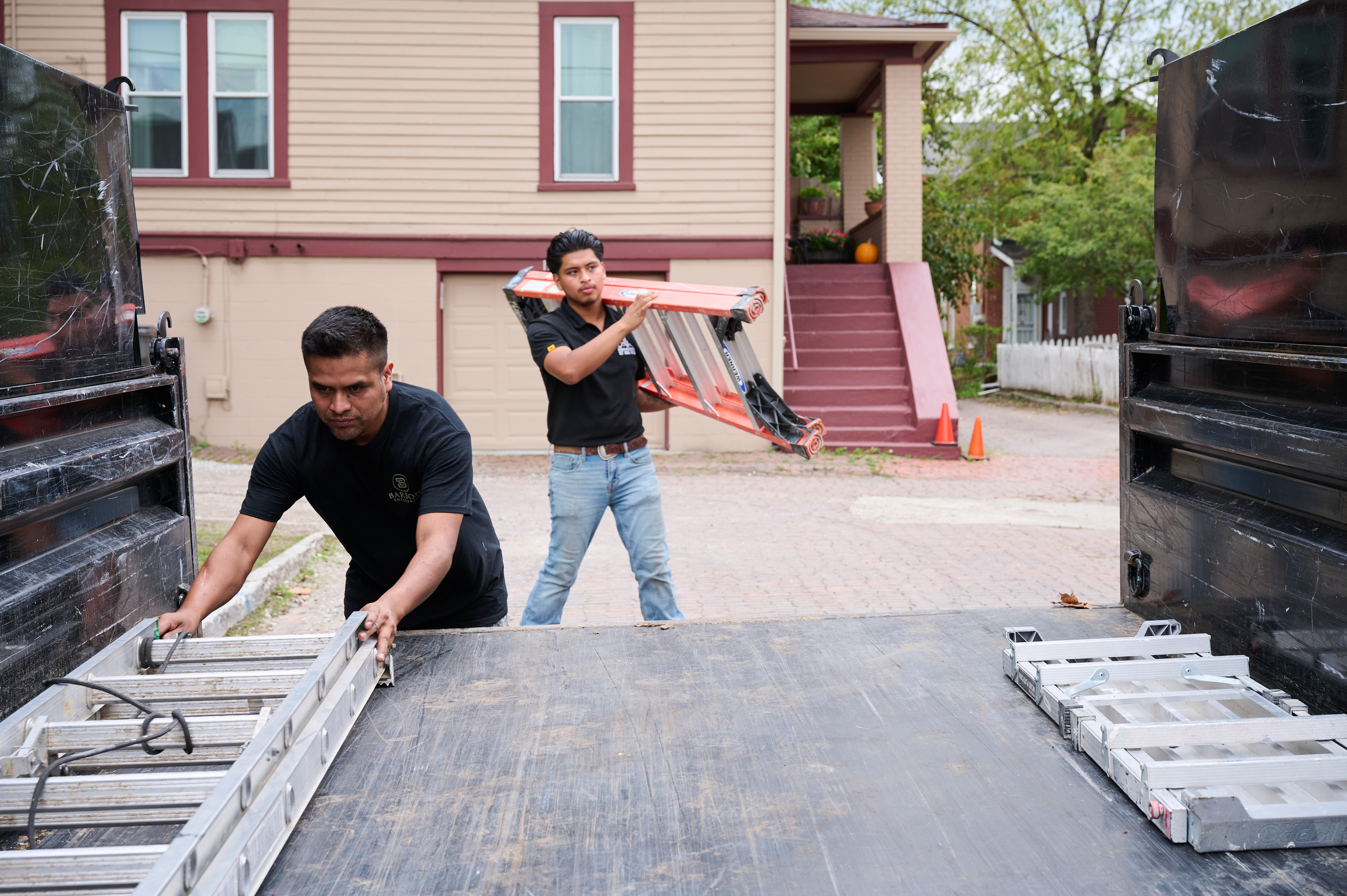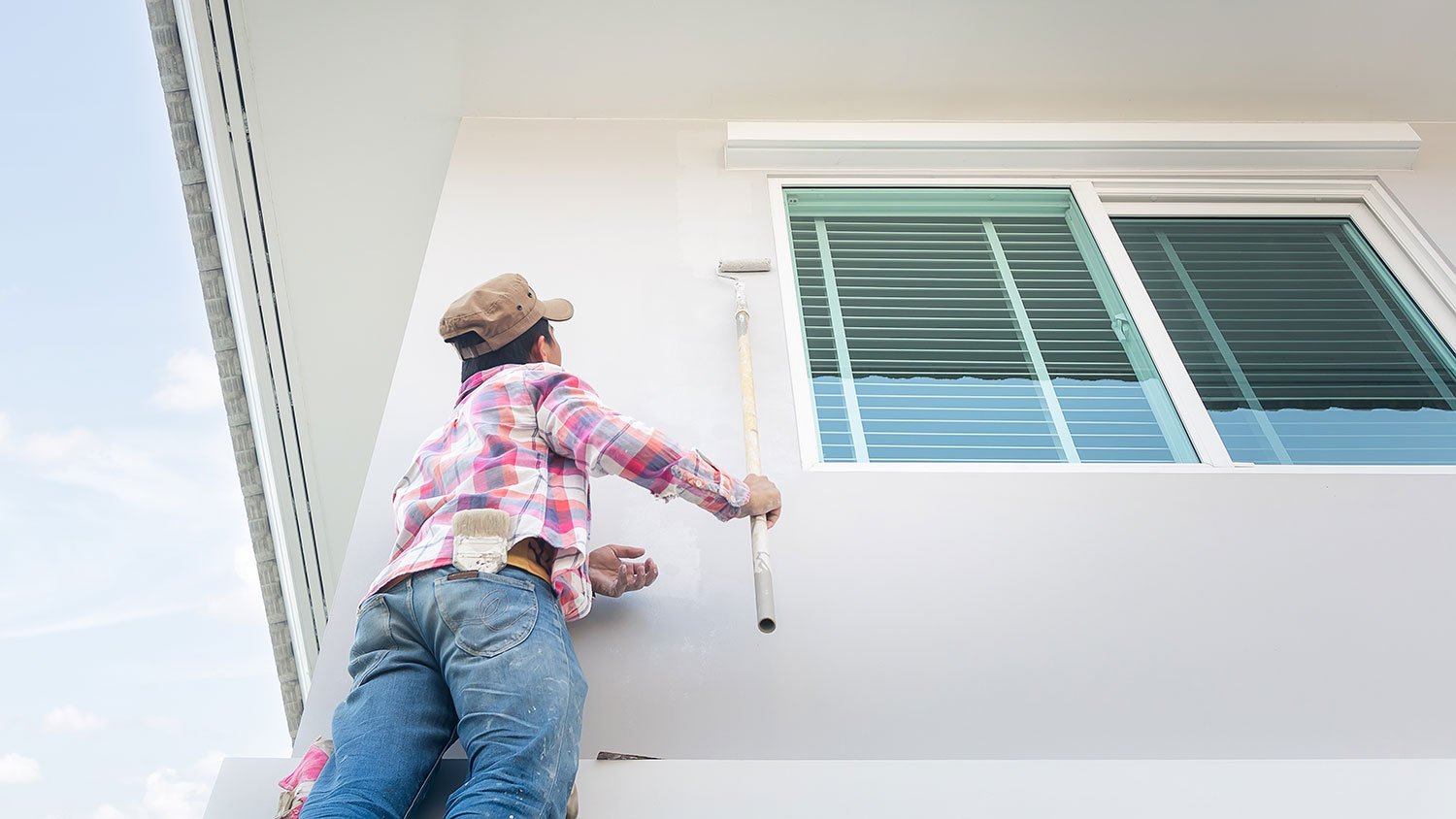
Sandblasting is a powerful method to remove paint, primer, and other coatings from hard surfaces. Learn the cost to rent a sandblaster and the factors involved.
Because we should all aim to be better on a ladder than Clark Griswold


Using a ladder to paint your home certainly poses risks, but many homeowners can successfully complete these projects. If you educate yourself and keep the necessary safety tips in mind, you can, too! Learn about the many ladder safety tips to help you be smart and successful when using a ladder for your next paint job.

Ladders are categorized by grades: 3, 2, 1, and 1A. These grades indicate their durability, with 1A being the highest and 3 being the lowest.
Grade 3 ladders: Common homeowner ladders, but are not recommended when working higher than 20 feet off the ground. Can hold up to 200 pounds.
Grade 2: Most used for residential painting because they are less heavy to maneuver; can hold up to 225 pounds.
Grade 1 ladder: For industrial and residential use, can hold up to 250 pounds
Grade 1A ladders: Strong, stable, and mostly for industrial use; can hold up to 300 pounds
If you’re noticing any parts of the ladder that are bent or cracked, hold off on the project until you’ve fixed the issue, or buy a new ladder.
Before setting up your ladder for your paint job, make sure you’re working on an even, solid surface. A ladder positioned on wet grass, or loose gravel is unsafe unless secured to avoid slippage. Dig a hole or stick the spiked feet into soft ground to ensure it stays put while you climb and paint.
Before you actually get started, it’s a good idea to test the ladder. Stand on the bottom rung and grab both rails, then move around a bit. If the latter isn’t sturdy, you’ll be able to tell and can then position the ladder better.
Most ladders have spreaders or safety bars that run horizontally to lock your ladder into place. Painting on a ladder requires movement at high elevations, and if a ladder suddenly closes, well, you get the picture.
A great tool for painting projects that require roof access is a ladder stabilizer. These are metal loops that you place into the upper ladder rungs. Ladder stabilizers increase steadiness and allow you to stand farther away from the wall so that you can reach more areas.

A brush extension can help you more effectively get to a hard-to-reach area when painting high ceilings and the top corners of walls.
Our arms are only so long, but the extension gives you greater control and reach. Just secure a brush or roller onto an extension pole—a much safer method than just trying to reach and risking falling off the ladder.
A good rule of thumb is to always keep three points of contact with the ladder. For example, two feet and one hand, or two hands and one foot should touch the ladder at all times. (This is why painting extension tools are valuable resources.)
For reasons you can imagine, avoid positioning a ladder against an unlocked door. With one swing, the person on the ladder will go flying. Your super simple safety tip? Lock the doors.
If you’re doing exterior painting, say a prayer to the weather gods. A particularly high-wind day poses additional risks, and you should probably push off the project for a calmer day. Same deal with snow and ice (for obvious reasons Clark Griswold knows all about).
A local exterior painting company can advise you on the prime weather conditions for interior and exterior painting projects so you’re not quite literally stuck on a ladder watching paint dry.
From average costs to expert advice, get all the answers you need to get your job done.

Sandblasting is a powerful method to remove paint, primer, and other coatings from hard surfaces. Learn the cost to rent a sandblaster and the factors involved.

Do you want the color of your exterior doors to really pop? Learn about the labor cost to paint the front door, back door, and other entranceways.

The cost to paint a pool deck depends on the dimensions and material, the type of paint, and whether you DIY. Read on to help determine a project budget.

Picking the right blue exterior house paint is easier said than done, but knowing which shades best suit the task will help you make the right choice.

Discover how to whitewash brick to enjoy its timeless charm and naturally protective properties.

Painting your stucco home can take your curb appeal up several notches. Here’s a step-by-step guide on how to paint a stucco house, including tools and supplies.